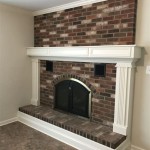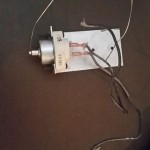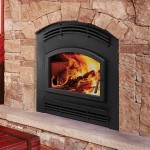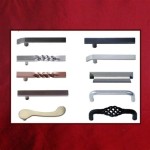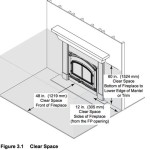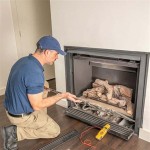Vented vs. Ventless Gas Fireplace Inserts: A Comparative Analysis
Gas fireplace inserts provide an efficient and aesthetically pleasing way to heat a home or supplement existing heating systems. When considering a gas fireplace insert, one of the primary decisions involves choosing between a vented and a ventless model. Both types offer distinct advantages and disadvantages regarding installation, efficiency, aesthetics, and safety. Understanding these differences is crucial for selecting the option that best suits individual needs and home characteristics. This discussion will delve into the key features of each type, highlighting their strengths and weaknesses.
A gas fireplace insert is essentially a self-contained heating unit designed to fit inside an existing fireplace cavity. This avoids the extensive construction needed for a new fireplace and provides a more effective heating solution than traditional wood-burning fireplaces. The fuel source is typically natural gas or propane, offering a consistent and controllable heat output. However, the method of venting combustion byproducts – or lack thereof – is the fundamental distinction between vented and ventless models.
Installation and Venting Requirements
The primary difference between vented and ventless gas fireplace inserts lies in their venting requirements. Vented inserts require a flue or chimney to expel combustion byproducts, such as carbon dioxide, water vapor, and small amounts of nitrogen oxides, to the outside. This usually involves connecting the insert to an existing chimney or installing a new venting system. The specific venting requirements vary depending on the insert model and local building codes. Professional installation is highly recommended to ensure proper venting and safe operation.
Ventless, or vent-free, gas fireplace inserts, on the other hand, do not require a chimney or flue. They are designed to burn gas so efficiently that the amount of combustion byproducts released into the home is minimized to levels considered safe by regulatory standards. These inserts typically have oxygen depletion sensors (ODS) that shut off the gas supply if oxygen levels in the room drop to an unsafe level. While ventless inserts offer greater installation flexibility, they are subject to stricter regulations and may not be permitted in all jurisdictions. Proper room size and ventilation are also critical considerations when using a ventless model.
The installation cost of a vented insert is generally higher due to the venting system requirements. Depending on the existing chimney condition and the complexity of the installation, costs can range significantly. A ventless insert, with its simpler installation, typically incurs lower upfront costs. However, the long-term maintenance and operating costs should also be factored into the overall decision.
Heating Efficiency and Operating Costs
Heating efficiency refers to the percentage of fuel converted into usable heat. Ventless gas fireplace inserts generally boast higher efficiency ratings than vented models, often exceeding 99%. This is because all the heat produced during combustion is released directly into the room, with no heat loss through a chimney or vent. This high efficiency translates into lower fuel consumption and reduced heating bills, making ventless inserts an attractive option for supplemental heating.
Vented gas fireplace inserts typically have lower efficiency ratings, often ranging from 70% to 85%. Some of the heat generated is lost through the venting system. However, the venting process also helps to remove moisture and combustion byproducts from the home, improving indoor air quality. The lower efficiency can result in higher fuel consumption and increased operating costs compared to ventless models. However, the enhanced air quality may be a more significant benefit for some homeowners.
The actual operating costs depend on several factors, including the local cost of gas, the frequency of use, and the size and insulation of the area being heated. While ventless models offer higher efficiency, vented models may be more cost-effective in the long run if the cost of maintaining adequate indoor air quality with a ventless model is considered, for example, the regular opening of windows or use of air purifiers.
Safety and Air Quality Considerations
Safety is a paramount concern when selecting a gas fireplace insert. Vented inserts are generally considered safer regarding indoor air quality because they expel combustion byproducts outside the home. This reduces the risk of carbon monoxide poisoning and other health problems associated with indoor air pollution. However, proper installation and regular maintenance of the venting system are crucial to ensure safe operation. Blocked or damaged vents can lead to dangerous carbon monoxide buildup within the home.
Ventless gas fireplace inserts are designed to burn gas cleanly and efficiently, minimizing the release of harmful emissions. However, they do release small amounts of carbon dioxide, water vapor, and other byproducts into the room. While these amounts are generally considered safe when the insert is properly installed and maintained, they can potentially contribute to indoor air pollution, especially in poorly ventilated spaces. The oxygen depletion sensor (ODS) is a critical safety feature that shuts off the gas supply if oxygen levels become too low, preventing carbon monoxide buildup. However, relying solely on the ODS is not a substitute for proper ventilation. Some individuals are more sensitive to indoor air pollutants than others, such as those with respiratory conditions, children and the elderly.
Many jurisdictions have specific regulations governing the use of ventless gas fireplace inserts. These regulations may limit the size of the unit, require specific room sizes, or prohibit their use altogether. It is essential to check local building codes and regulations before purchasing and installing a ventless gas fireplace insert. Regular inspections and maintenance of both vented and ventless inserts are crucial to ensure safe and efficient operation.
Ultimately, the choice between vented and ventless gas fireplace inserts involves a trade-off between installation costs, heating efficiency, and air quality. Vented models offer improved air quality and are generally considered safer, but they require more complex installation and have lower efficiency. Ventless models offer higher efficiency and easier installation, but they may raise concerns about air quality and are subject to stricter regulations. Understanding these factors is essential for making an informed decision that aligns with individual priorities and local regulations.

Vented Vs Ventless Gas Logs What S The Difference

Vented Or Ventless Gas Fireplace Which One Is Better

Vented Vs Ventless Fireplace Explained Finding The Perfect Fit For Y

Vented Vs B Vent Direct Free Dixie S

Vented Or Ventless Gas Fireplace Which One Is Better
:max_bytes(150000):strip_icc()/ventless-gas-fireplaces-4160746-hero-f9d4bdcd9bd446eb84406de306f790ba.jpg?strip=all)
How To Pick Out A Ventless Gas Fireplace

Vented Or Ventless Gas Fireplace Which One Is Better

Which Is Better Vented Or Non Gas Logs

Gas Insert Or Fireplace Which One Do I Actually Need Will It Heat

Vented Vs Ventless Gas Logs Differences How To Choose
Related Posts

